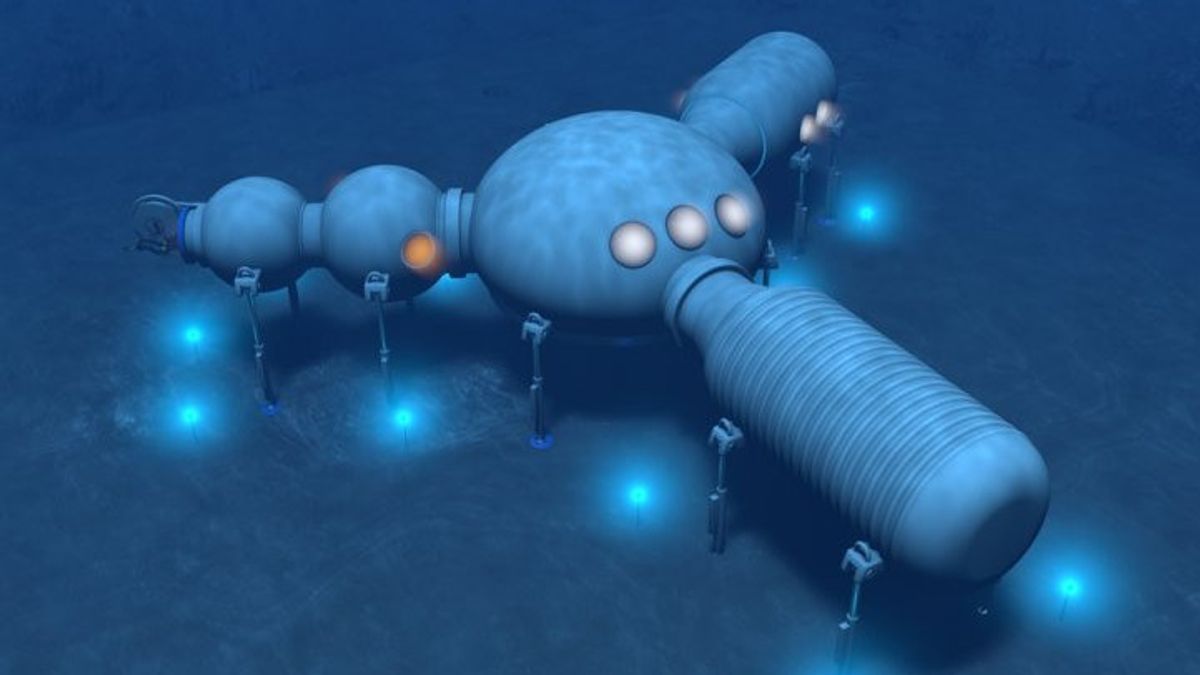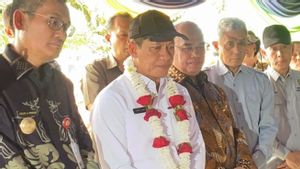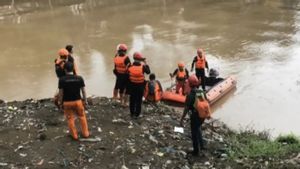JAKARTA - The City Government of Ulsan, South Korea officially launched the "underwater city" project, after winning the central government's business project in which new technology will be built and maintained, to maintain the underwater living environment for the people.
According to the city government, the Ministry of Maritime Affairs and Fisheries has selected a southeast coastal city for the project. With a project grant of 31.1 billion won from the ministry, the city government will carry out the project with the Korea Institute of Marine Science and Technology (KIOST) using a total fund of 37.3 billion won or around Rp. 435,997,175,536 until 2026.
For the project, the city, located on the southeast coast, will develop technology, to create an underwater residential habitat for up to five people at a depth of 50 meters in the ocean.
The city of Ulsan will also build a working prototype for a modular type underwater living space where up to three people can live at a depth of 30 meters.
Through the project, the City of Ulsan hopes to develop new technologies such as equipment that allows them to analyze the marine environment, as well as carry out underwater construction, using unmanned equipment, creating underwater energy supply and communications, monitoring the health of underwater inhabitants and securing their safety. .
"This is a meaningful project that pioneers the uncharted space under the ocean and thereby expands the habitable space for mankind," said an official from the Ulsan City Government's Marine, Port and Fisheries Division, as reported by the Korea Times April 14.

"We hope the city's new challenges can propose new ways to prepare for the climate crisis and resource shortages."
The ministry chose Ulsan because the sea water, off the coast of the city, has ideal conditions to carry out an underwater research project in terms of turbidity (cloudiness or cloudiness of water), tidal level and temperature.
The seabed has stabilized without major earthquakes for the past 20 years, proving the area has a relatively high level of safety against natural disasters. The city also has globally recognized shipbuilding technology and offshore factories.
Later, the city government and KIOST will carry out the project in a step-by-step process, from designing the underwater module room to its construction, to operating it and developing the technology to maintain the facility. Each step will go through a performance test.
Their joint research and development began this year, analyzing the characteristics of the seabed along with the sea conditions of the project's testbed. Followed by the design of the main module for underwater facilities, residential modules, space modules, and data center modules. Construction and performance tests for the facility will be completed by the end of 2026.
"To realize an underwater living space that is completely independent of land, we need a variety of technologies that work together, from underwater construction robots and offshore generating technologies to technologies that enable underwater telecommunications, energy storage and utilization," the government official said. city.
"This project, once completed, will greatly improve the city's local industry and competitiveness in the future," he said.
Upon successful completion of the project, it is hoped that it will pave the way for further test projects, such as building a marine natural disaster forecasting system for earthquakes and tsunamis, as well as building an underwater data center with high energy efficiency, and security. and tour packages that allow the experience of living underwater.
The English, Chinese, Japanese, Arabic, and French versions are automatically generated by the AI. So there may still be inaccuracies in translating, please always see Indonesian as our main language. (system supported by DigitalSiber.id)













